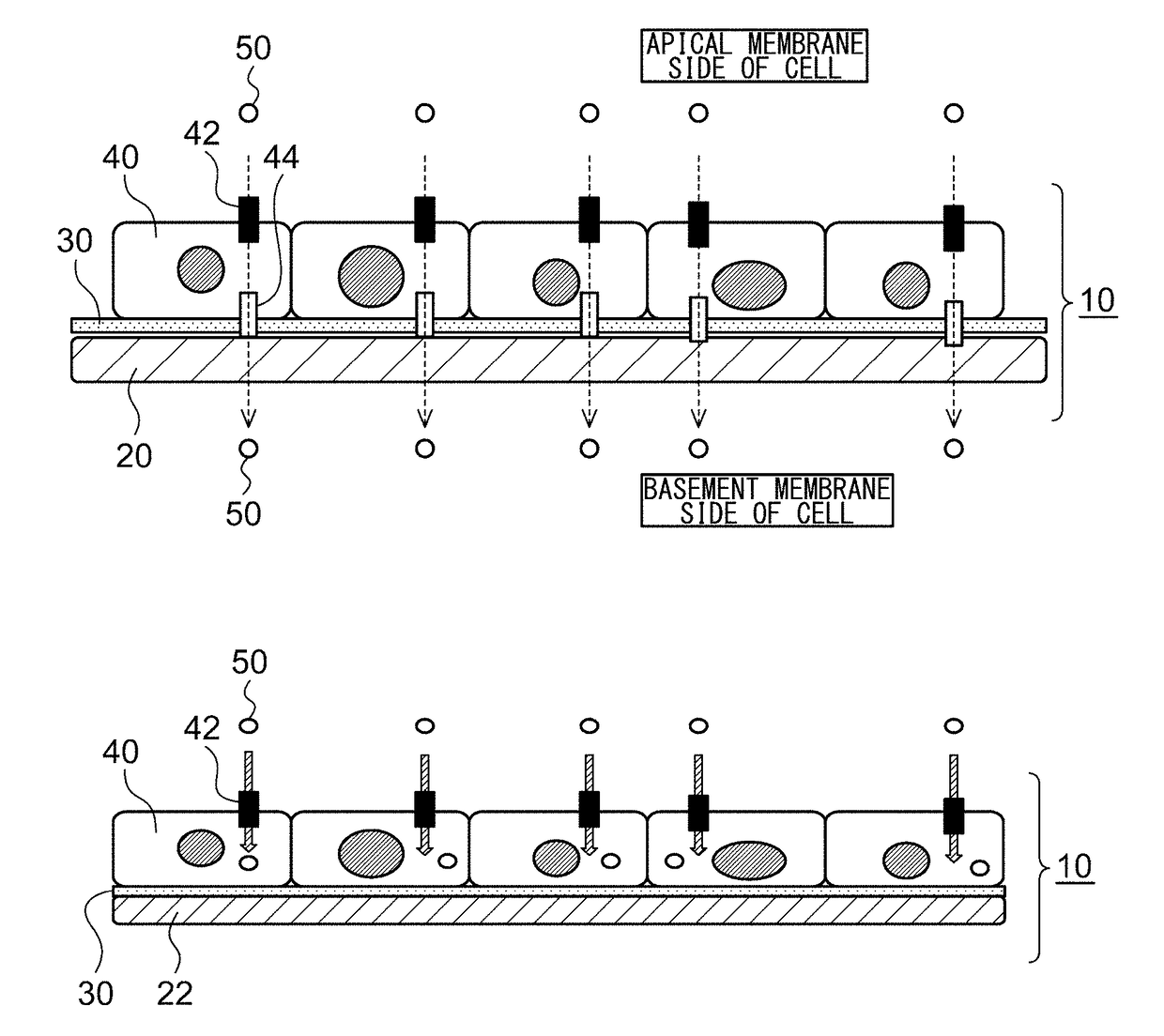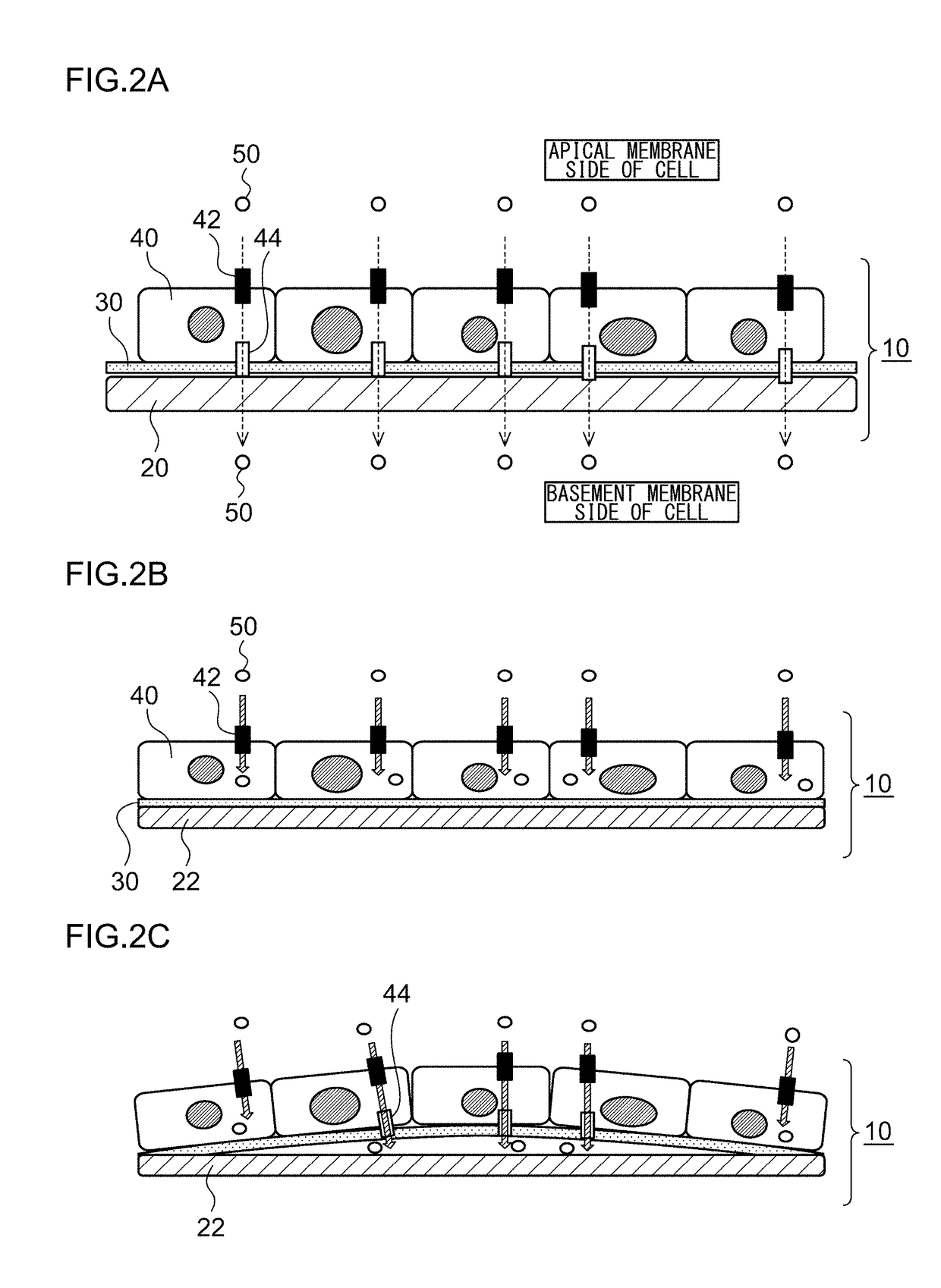Cell support composite and method for producing cell support composite
a cell support and composite technology, applied in the field of cell support composites, can solve the problems of deteriorating the function of the bioartificial kidney to absorb useful components in the blood plasma, difficult to confirm, and inability to transmit light, so as to improve the stability of the single layer epithelial structure formed by cells
- Summary
- Abstract
- Description
- Claims
- Application Information
AI Technical Summary
Benefits of technology
Problems solved by technology
Method used
Image
Examples
embodiments
[0043]FIGS. 2A to 2C are drawings that schematically show the constitution of a cell support composite 10 of an embodiment. FIG. 2A is a drawing showing the constitution of the cell support composite of an embodiment in which the substrate has water permeability. FIG. 2B is a drawing showing a case where culturing is conducted for a short time in the cell support composite of an embodiment in which the substrate has no water permeability. FIG. 2C is a drawing showing a case where culturing is conducted for a long time in the cell support composite of an embodiment in which the substrate has no water permeability.
[0044]As shown in FIG. 2A, the cell support composite 10 has a substrate 20, which is formed of an artificial material, a laminin molecule 30 or a fragment thereof, which is an adhesion molecule that adheres to at least a part of the substrate, and culture cells 40 adhering to the substrate 20 via the laminin molecule 30 or the fragment thereof. “At least a part of the subst...
examples
In Case where Substrate is Petri Dish (Well Plate): Screening of Laminin
[0080]A 96-well plate (made of polystyrene: CELLSTAR, Greiner Bio-one) as a substrate was coated with a laminin screening kit (LAM screen, Biolamina). The laminins used were Laminin-111, Laminin-211, Laminin-332, Laminin-421, Laminin-511 and Laminin-521. As a comparative example, cells were cultured without coating with a laminin (No coating). Furthermore, Laminin-411 was used as a comparative example. In the coating with the laminin, a laminin solution diluted to 10 μg / ml was added to wells and allowed to stand still at 4° C. overnight. 140 μl (1.4×104 cells) of human proximal tubule cells (Lonza) (1.0×105 cells / ml) were seeded, and cultured under conditions of 37° C. and 5% CO2 by using an REGM (Lonza) as a culture medium. The culture medium was replaced every 2 days. The microscopic images (×10) after 1, 8 and 20 days had passed after the seeding are shown in FIG. 4.
[0081]The coating of the adhesion molecule ...
PUM
| Property | Measurement | Unit |
|---|---|---|
| Mass | aaaaa | aaaaa |
| Mass | aaaaa | aaaaa |
| Mass | aaaaa | aaaaa |
Abstract
Description
Claims
Application Information
 Login to view more
Login to view more - R&D Engineer
- R&D Manager
- IP Professional
- Industry Leading Data Capabilities
- Powerful AI technology
- Patent DNA Extraction
Browse by: Latest US Patents, China's latest patents, Technical Efficacy Thesaurus, Application Domain, Technology Topic.
© 2024 PatSnap. All rights reserved.Legal|Privacy policy|Modern Slavery Act Transparency Statement|Sitemap



